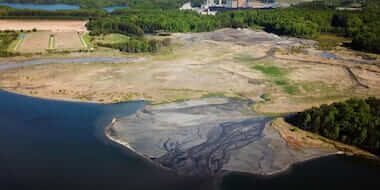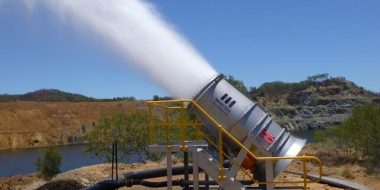During the early hours of Sunday morning, a tailings dam at the former Jagersfontein Diamond Mine in South Africa failed catastrophically. This tailings dam failure triggered mudslides, killing multiple people and injuring more than 40, as the deadly torrent washed away 9 homes and damaged up to 20 more.
The incident is a timely reminder of the need to effectively manage Tailings Storage Facilities (TSF) both in operational and legacy settings.
Locals are reporting telecommunication systems down and a number of residents are still unaccounted for. It is predicted that the death toll may rise further in the coming days. Residents in Jagerfontein are currently cut off with no electricity and no drinking water.
Eskom, the national electricity provider in South Africa issued a statement after one of its power substations was inundated with mud. “Due to the current situation in the Jagersfontein area and inaccessibility of our substation, it is impossible to estimate when supply will be restored or to determine the extent of the damage”.

Once referred to as the largest diamond mine hole in the world, Jagerfontein ceased operations in the 1970s following scrutiny around its potential stability and environmental impacts. Since then the site has remained largely static, though has presented an ongoing risk to the community. Diamond giant De Beers sold the asset back in 2010 to black economic empowerment holding company Superkolong Consortium, in the process leaving over 13 million tons of mineral resources in its storage dams for recovery. It is unclear what activity has occurred since Superkolong Consortium assumed responsibility for the Jagerfontein and all respective assets.
According to locals, the dam had been in disrepair for years and was not properly maintained. In the months leading up to the disaster, increased rainfall from La Nina weather conditions impacted dam storage levels and, along with an increase in recent seismic events, may have contributed to the instability and subsequent tailings dam failure.
The Department of Mineral Resources is conducting an investigation into the failure of the tailings dam and will release a statement upon completion. As Jagersfontein is not in operation, no information on the structure or the upkeep is available although there is a suggestion that as part of its remediation programme, some work has occurred to manage the dumps and slides. Superkolong Consortium has not yet released a statement.

Minister of Mineral Resources and Energy, Gwede Mantashe mentioned “compensation for fatalities, compensation in terms of damage to property will be taken as a responsibility of the company that owns the slimes dam”. Although no compensation can ever make up for the loss of life, it is a positive indication that someone will be held accountable for this tailings dam failure.
According to World Mining Tailings Failures, there are 29,000-35,000 existing active, inactive and abandoned tailings storage facilities around the world, containing approximately 223 billion tonnes of wastewater. There is an increased risk and trajectory for tailings dam failures in the future due to the following reasons;
1. Existing TSFs are receiving more water than originally scoped for.
2. TSFs receiving waste from planned mineral production are “high hazard potential”.
3. The reprocessing of tailings escalates the volume of wet load and stress.
Without best practice principles, such as a life of facility management and rigorous independent stability analysis, TSFs are at risk of collapse by flow side generated by stresses within the tailings stack itself. It’s estimated that between 50-65% of TSFs were built circa 1990 with outdated frameworks and guidance. The risk of future tailings dam failures is increasing both in frequency and severity. According to World TSF data, it’s suggested between 43-50% of existing TSFs are in the high hazard potential category.

This is an unfortunate indication that disasters like the Jagersfontein tailings dam disaster are set to increase unless significant changes are made to regulatory compliance for both new and existing TSFs.
As the families of the victims in Jagersfontein begin the process of mourning and as the Southern Hemisphere moves into an unprecedented third period of La Niña which has the potential to compound already challenging conditions, owners and operators of mining companies around the world now bare an even more significant burden of managing tailing storage facilities in both operational and legacy sites.
Minetek offers an alternative to raising TSF or building a new dam. Our evaporation system can be used to draw down the water level and in turn, defer the TSF lift for a number of years. Leave your details below to learn more.












